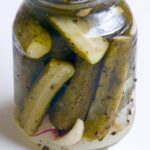In the bustling kitchen laboratory where fruit transforms from fresh and tangy to luscious and spreadable, magic meets meticulous measurement. Welcome to the sweet science of jam-making, where understanding the delicate dance between fruit and sugar unlocks the perfect preserve. This isn’t just about sweetness; it’s about balance, chemistry, and texture-crafting a jam that sings with flavor, sets just right, and preserves the essence of summer in every spoonful. Join us as we decode the fruit-to-sugar ratio, unveiling the secrets that turn humble berries and stone fruits into glossy jars of delight. Whether you’re a curious cook or a seasoned preserver, mastering this ratio is your key to jam nirvana.
Sweet Science: Decoding the Fruit-to-Sugar Ratio for Jam reveals the fascinating balance of nature’s sweetness and chemistry that transforms fresh fruit into luscious jam. Mastering this balance means understanding how fruit sugars and pectin interact, unlocking the perfect texture and vibrant flavor that make every spoonful a delight.
Prep and Cook Time
Preparation: 20 minutes | Cooking: 30 minutes | Total: 50 minutes
Yield
Approximately 4 half-pint jars
Difficulty Level
Medium – requires attention to detail but approachable for home cooks
Ingredients
- 4 cups fresh fruit (such as strawberries, apples, or blackberries), chopped
- 3 cups granulated sugar (adjustable)
- 1 tbsp lemon juice (freshly squeezed)
- 2 tsp powdered fruit pectin
- 1/2 cup water
Instructions
- Place chopped fruit in a large, heavy-bottomed saucepan along with water and gently mash with a potato masher to release natural juices.
- Add lemon juice; its acidity helps activate pectin and balance sweetness.
- Sprinkle in pectin and stir vigorously to avoid lumps. Bring mixture to a full boil over medium-high heat, stirring constantly.
- Once boiling, add sugar gradually, stirring continuously. Maintaining a rolling boil is key to activating the gel formation.
- Boil hard for 1 minute, then remove from heat. Skim off any foam to keep a clear, glossy finish.
- Perform a gel test by placing a spoonful on a chilled plate; if it wrinkles when pushed, the jam is ready.
- Ladle hot jam into sterilized jars, leaving 1/4 inch headspace. Seal immediately to preserve freshness.
Tips for Success
- Choose naturally sweet and ripe fruits to reduce added sugar without compromising flavor.
- Experiment with different fruit blends to find your preferred sweetness and texture balance.
- If you need to lower sugar, increase the pectin slightly and do not skip the acid-it’s essential for setting.
- Use trusted resources for detailed pectin types and guidelines.
- Soon-to-be-expired fruit can be saved with a bit more sugar and lemon juice, rescuing flavor and texture alike.
Serving Suggestions
Serve your homemade jam generously spread over toasted crusty bread or flaky scones, garnished with a sprig of fresh mint or a light dusting of powdered sugar. For a decadent twist, swirl into vanilla yogurt or dollop over creamy cheesecake. The vibrant color and perfectly balanced sweetness make it irresistible atop breakfast platters or as a thoughtful gift.

| Nutrient | Per 2 tbsp Serving |
|---|---|
| Calories | 60 |
| Protein | 0.2g |
| Carbohydrates | 15g |
| Fat | 0g |
For more on mastering preserves, explore our comprehensive guide to homemade jams and dive deeper into the marvelous world of culinary chemistry and flavor science.
Q&A
Q&A: Sweet Science – Decoding the Fruit-to-Sugar Ratio for Jam
Q1: Why does the fruit-to-sugar ratio matter so much when making jam?
A1: Think of the fruit-to-sugar ratio as the secret recipe that turns fresh fruit into luscious, spreadable magic. Too little sugar, and your jam might not set or could spoil faster. Too much sugar, and the natural fruit flavors get lost, leaving you with something overly sweet and one-dimensional. The ratio balances preservation, texture, and flavor to create that perfect spoonful of joy.
Q2: Is there a universal fruit-to-sugar ratio for all jam recipes?
A2: Not quite! While a classic ratio is often 1:1 – equal parts fruit and sugar by weight – different fruits and desired sweetness levels shift the equation. Tangy fruits like rhubarb or blackcurrants might call for less sugar, while milder fruits like peaches sometimes need a bit more. The jam’s purpose (preserving, flavor intensity, or dietary preference) also influences the ideal balance.
Q3: How does sugar actually help jam set?
A3: Sugar is more than just sweet; it’s a jam’s best friend in the chemistry lab. It binds with water inside the fruit, reducing free water that bacteria can use to grow, helping preservation. Plus, combined with natural fruit pectin and acid, sugar facilitates the gel formation that gives jam its signature wobble and spreadability.
Q4: Can I make jam with less sugar and still get the right consistency?
A4: Absolutely! Low-sugar or sugar-free jams can work, but they often rely on added pectin or alternative sweeteners. Watch out-less sugar means shorter shelf life and typically a softer set. Experimentation and precise cooking times become your allies in crafting jam that’s both delicious and safe.
Q5: What tips can help me find the perfect balance on my first try?
A5: Start with trusted recipes to understand the basics, then adjust based on your fruit’s sweetness and acidity. Always weigh ingredients rather than eyeballing. Taste the fruit beforehand-more tart fruits usually pair with more sugar. And remember, patience is key: the jam’s flavor sharpens after a day or two of resting.
Q6: Does the type of sugar affect the fruit-to-sugar ratio or the end jam?
A6: Different sugars bring unique personalities! Granulated white sugar is the classic jam partner, providing clear sweetness and consistent setting. Brown sugar adds a caramel note and deeper color but can alter texture slightly. Alternative sweeteners like honey or agave need recipe tweaks to balance moisture and pectin, so keep that in mind when experimenting.
Q7: What’s the biggest takeaway about fruit-to-sugar ratios that home jam makers should remember?
A7: It’s an art and a science! The fruit-to-sugar ratio is your control panel for flavor, texture, and preservation. Embrace it as a flexible guideline rather than a rigid rule, and let your palate guide you. With some love, measurement, and a bit of sweet science, you’ll unlock jam-making bliss every time.
In Conclusion
As we uncover the delicate dance between fruit and sugar, it becomes clear that crafting the perfect jam is both an art and a science. Understanding the fruit-to-sugar ratio not only ensures a harmonious balance of flavor and preservation but also unlocks the true potential of every berry, peach, or plum. Whether you’re a seasoned jam-maker or a curious kitchen alchemist, mastering this sweet science empowers you to create spreads that burst with brightness, hold steadfast against time, and celebrate nature’s sweetness in its purest form. So, next time you stir your pot, remember: the secret to unforgettable jam lies in decoding the numbers – and savoring the delicious results.


